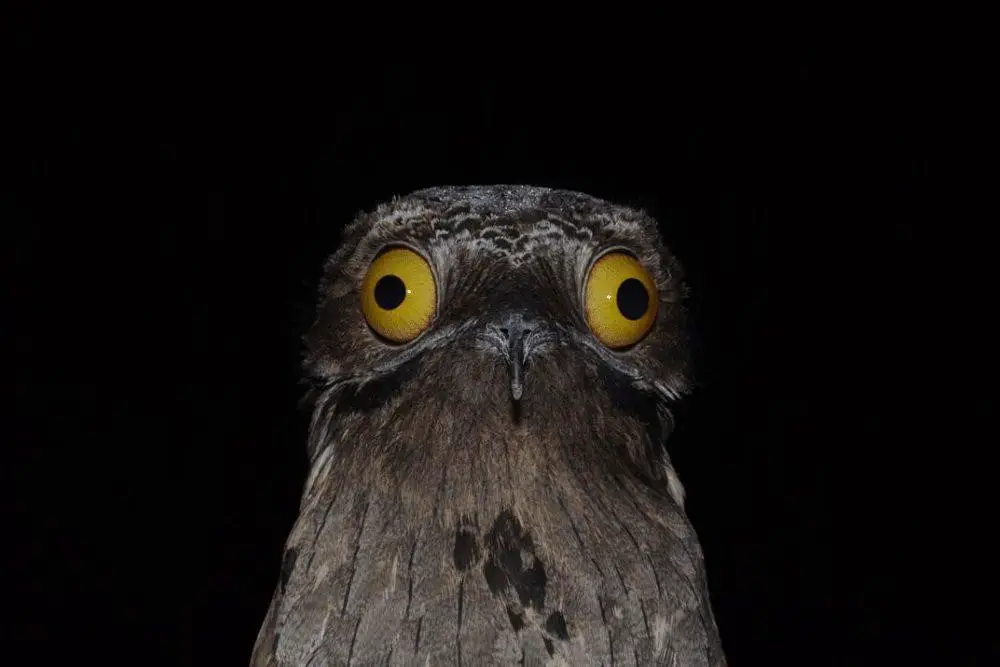How Much Do You Know About Weird But Wonderful Potoo Bird?

About photo birds, there are lots of things going through our heads. The seeking of this bird is never going to end. People want to know where they live. Are they really real? What do they eat? If you are still uncomfortable with this bird, then wait, this is the right place for you.
We gathered lots of fantastic information about this bird which may clear your concept. This most fascinating bird on the planet hides lots of secrets.
Because of the secretive and elusive habits, it's hard to find them. Some interesting details we've collected for you. Stay tuned with us to know about this bird.
What Is a Potoo Bird?
Among lots of mystery species, the Photo Bird is the most unique out there. This is a nocturnal bird that is found in the American Tropics. Its scientific name is "Genus Nyctibius''. In some places, this bird is named "PO-TOO".
After researching this species, we found that these birds have a complex pattern. They have a combination of gray, black, and brown plumage. It's hard to find them in daylight because they sleep during the day. Because of their brilliant camouflage, this bird is really hard to identify, especially from dead branches.
In the dust, they awaken with huge eyes. They are also capable of identifying moths and other small flying objects in the dark. With a wide and gaping mouth, this bird looks beautiful and attractive.

Overview of Potoo Bird:
Although this bard is a solitary creature, it has some distinct and different activities. So, you can easily differentiate this bird from others.
As you know they have the scientific name "Nyctibius" but the fact is under this type there are seven species. All these species constitute an independent family and this bird comes from this group where birds are primarily active at dawn and dusk. Take a quick look at some facts about this bird.
| Particulars | Descriptions |
| Habitat: | Wide-ranging across species, including forests, savannas, mangroves, and urban areas. |
| Location: | Central & South America (excluding Chile). |
| Lifespan: | No one knows! Potentially 12-14 years. |
| Size: | Smallest species: 21–25cm. Biggest species: 46-58cm. |
| Weight: | Smallest species: 46-58g. Biggest species: 340-652g. |
| Color: | Pale grey to brownish |
| Diet: | Flying insects (beetles, moths, grasshoppers, and termites) |
| Predators: | Falcons, monkeys (Howler, Capuchin, Spider). |
| Top Speed: | No data |
| No. of Species: | 7 |
| Conservation Status: | Least Concern |
The Way of Identifying a Potoo Bird:
This bird is actually tricked with humans and other living things using camouflage. It's not easy to identify them, especially from the dead branches. If you are cunning enough, then there is a chance to see them alive. When looking for a bird-like this one, you might counter
- Common Potoo Bird
- Great Potoo Bird
Common Potoo Bird:
The scientific name of the bird is Byctibius Griseus. This name is called in a mournful series of whistled notes and these notes go down in scale.
Great Potoo Bird
Byctibius Grandis is the scientific name of this species. They utter loud squawks. The interesting fact is that it can make deep guttural sounds. This sounds like haunting noise. Many people get frightened by this sound. In the deep forest, you can also hear a strange call of the Long Tailed Potoo Bird as well.
If you are really eager to find this bird yourself, then search for them on moonlit nights. In this light, it's easy to find them. In the full moon, they often come out and call for the moon.

Funny Facts about Potoo Bird:
This bird is not only a mysterious bird to us but also has different characteristics. Researchers of this bird agreed about a few facts that are not only true but also funny as well and these are given below.
Wild and Largemouth
Despite having small beaks we expected to see this bird with a small mouth. The truth is their mouths are huge. Their mouths help them to catch the target like beetles, moths, and other small insects. This mouth is not only large but also wide as well.
Master of disguise
This bird is like an owl. It becomes active at night. During the day, it's hard to find them in the wild. They always sleep during the day. As a nocturnal bird, it is obvious that this bird can camouflage.
In this term, this bird is best. They can make them like a piece of dead branch or piece of tree bark or broken-off stumps.
No Nest:
To find this bird is hard because they don't have any permanent nests. They lay only a single egg but they don't do it in the nest. For laying eggs they choose in the nook of a branch or broken off the stem.
They Love Moon
There are lots of myths we found about this bird and crying for the moon. They also love the moon.

How You Can Find a Potoo Bird When Visiting the Jungle?
If you're a non-experienced person or random visitor, then you might need to get some help to find this bird. Here are some tips for you about it.
- Take a guide and ask them to let you go to the Potoo sites.
- Wait for the moonlit night and watch them in this light.
- Do not look everywhere for this bird, just look at odd lumps on branches.
- Take a trained guide, not an amateur one to explore the jungle at night.

Conclusion:
When the full moon rises, the Potoo bird starts to spread their wings with some mysterious calls. They create shadows at night. You just need to keep your eyes open to see them, not a flashlight. This nocturnal bird is not easy to find.
Despite this, people find ways to see them. This bird acts like an owl with big round eyes. But their camouflage method and wide big mouth make them districting in their kind.
Now on the internet, lots of photos are available of this bird. But watching them live is something different. People are still talking about this bird because there are lots of things yet to know about it.
Fyxes
Thoughts, stories and ideas.




